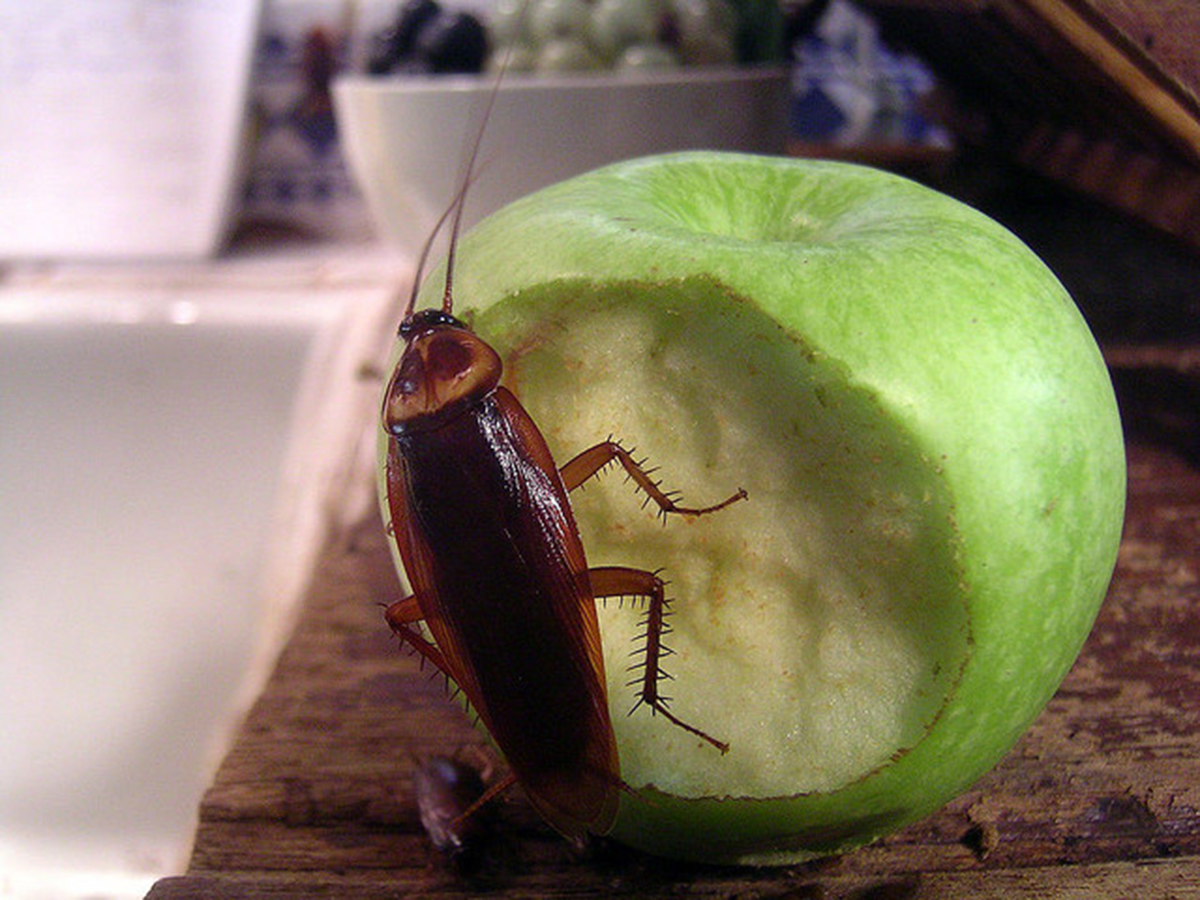Table of Contents
Learn why cockroaches are more of a risk than a nuisance, and which neurotoxins to avoid when you try to battle them.
If you don't want to live alongside cockroaches, there are a few environmental factors that make a roach infestation less likely. Unfortunately, these measures aren't available to everyone:
- Live in a temperature climate where cockroaches can't survive the winter outdoors.
- Live in a free-standing house, rather than an apartment building.
- Keep your home immaculately clean, including ensuring that all food is out of reach — in the fridge or packed in air-right containers. Food particles should immediately cleaned up.
- Eliminate roaches' source of water. This is almost impossible.
- Check anything you bring into your home for the presence of cockroaches.

If those things don't work, looking towards chemical measures is a solution much more likely to yield success.
Spraying Or Fogging For Roaches
Cockroaches are notoriously difficult to eliminate — what would you expect from a critter that developed resistance to chemicals such as DDT, an environmental pollutant that was banned in many countries as it poses a health risk to humans? If your cockroach infestation has reached the level where you see roaches during the day, face large numbers of roaches at night, or cockroach feces are unmissable and your house reeks of roach, fogging may be your only solution. Though not even this ensures that your roach infestation will definitely be a thing of the past, it will help — especially alongside other measures like keeping food out of reach, using bait stations, and fixing leaky pipes. What do you need to know about fogging for roaches?
- Using aerosols in your home is a guaranteed way to be exposed to the pesticides yourself, along with your kids, any visitors you have, your pets, and your plants. Everyone who enters the premises after a fogging will inhale tiny particles of the active ingredient.
- Whether you're DIY-ing the fogging or hiring a professional, make sure to follow the instructions. Stay out of your home at least for the advised duration, and open all windows to air your home when you return.
- If you are in the US, only use US EPA approved products, and only in the manner advised.
People who decide to spray or dust for roaches themselves, and who also use bait stations, need to make sure that they spray in areas not accessible to humans and pets. The nooks and crannies where the roaches typically hide should be targeted, not the working surface in your kitchen. Bait stations may be a tempting object for oral exploration in young infants and toddlers — keep them way out of reach.
Which Poison?
Which poisons should you avoid, and which are safer? Boric acid may be toxic to humans when they are exposed on a daily basis over months, but it has a low acute toxicity and isn't absorbed through the skin. Hydramethylnon also has a low toxicity but may be dangerous for fetuses. Diatomaceous Earth leads to lung irritation when inhaled, while Neonicotinoids come with a moderate acute toxicity and are absorbed through the skin. Organophosphates are incredibly toxic, especially for children. The moral of the story is, of course, to know your poison. Look any roach poison you plan to use up before treating your home with it.
Once you're done and the cockroach infestation noticeably improves, remove bait stations and look into using a repellent to prevent new populations of cockroaches from moving into your home.
- Photo courtesy of 74568056@N00: www.flickr.com/photos/74568056@N00/3885767820/
- Photo courtesy of neilt: www.flickr.com/photos/neilt/8011331/


Your thoughts on this